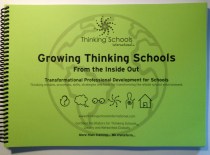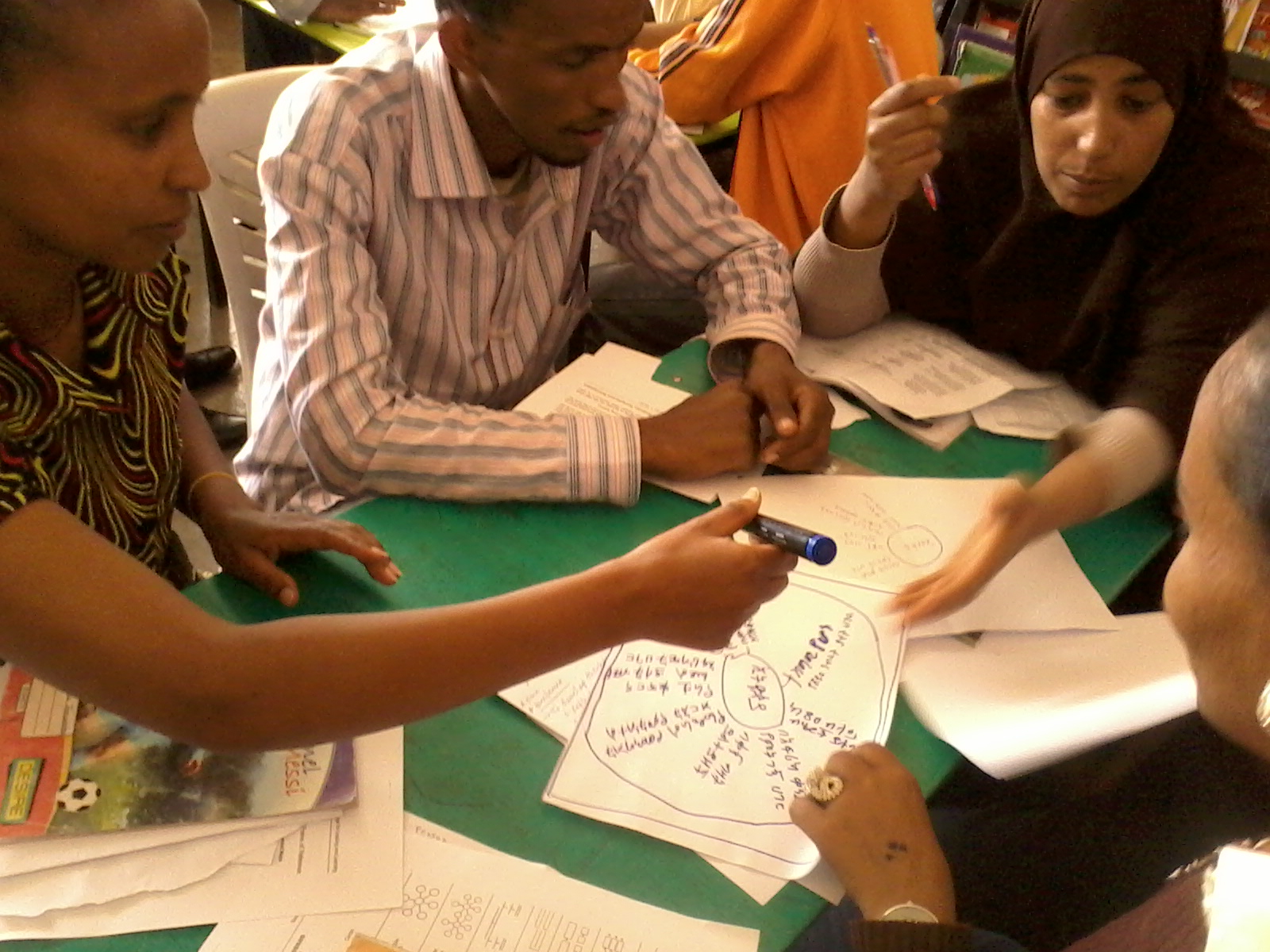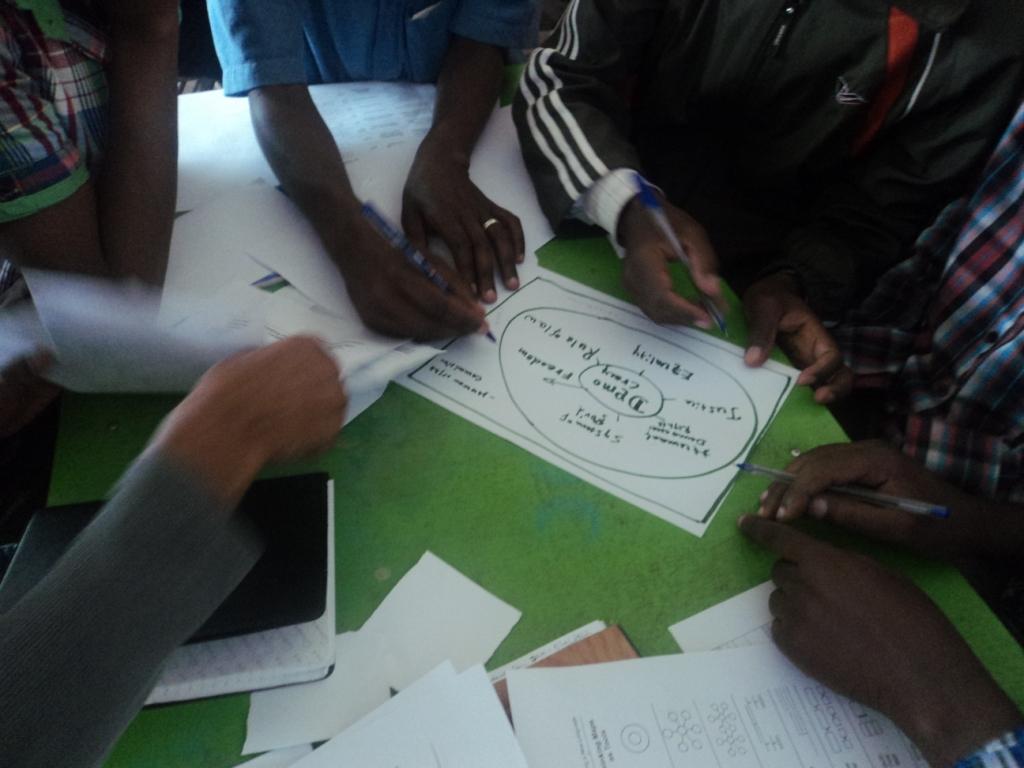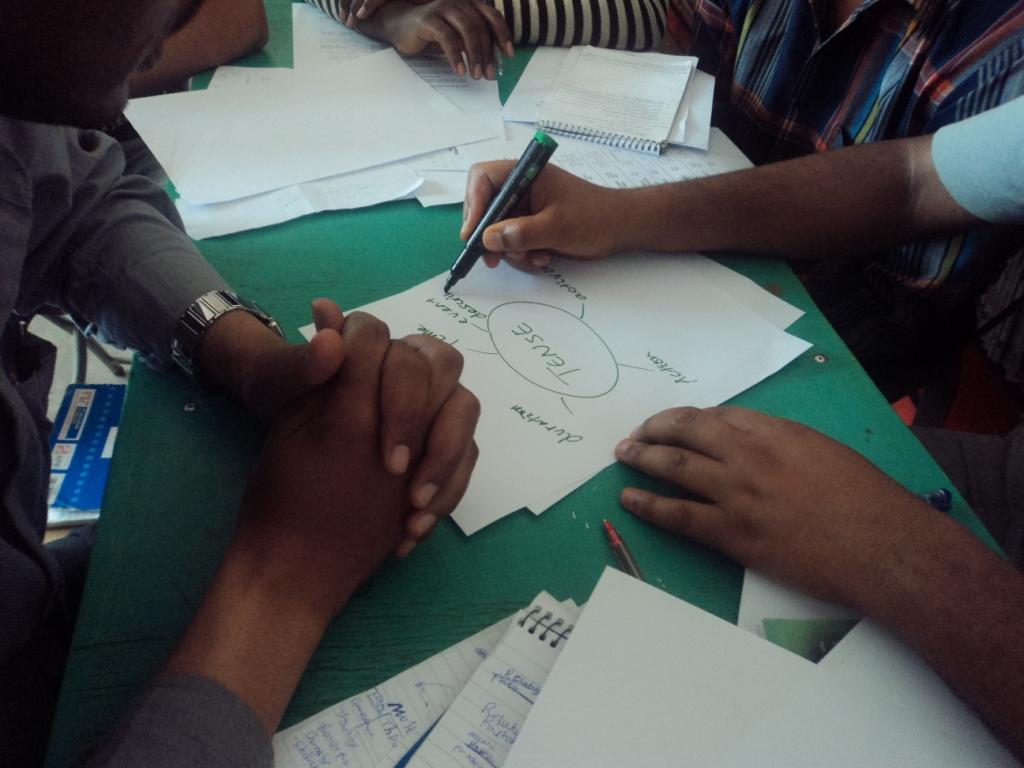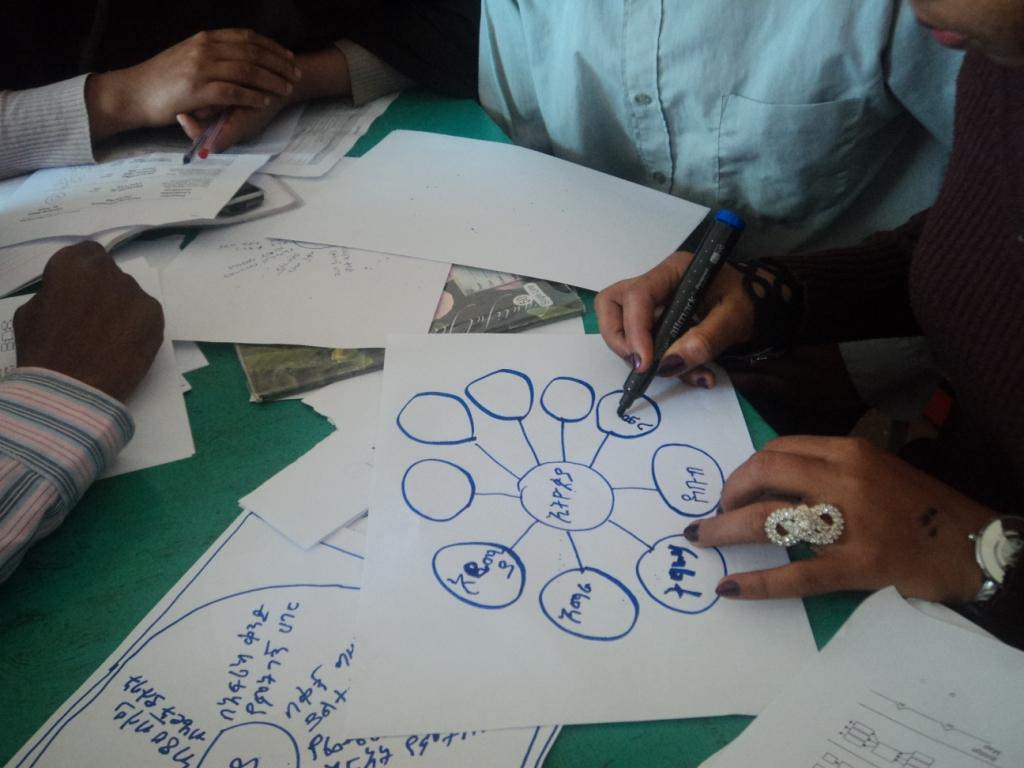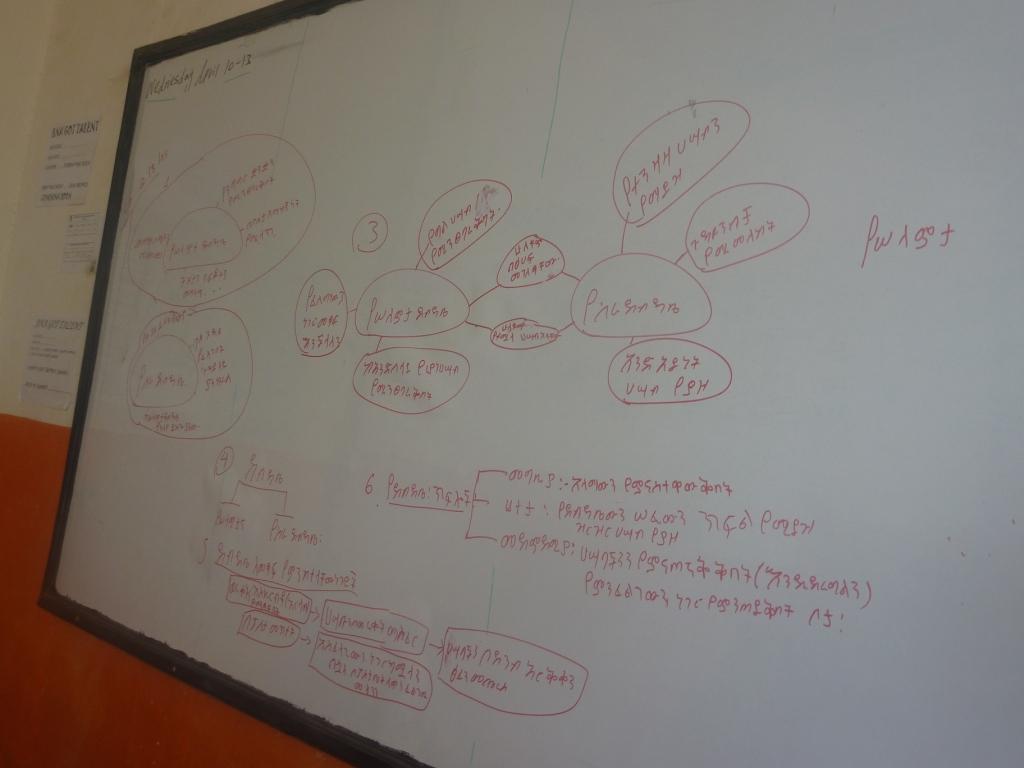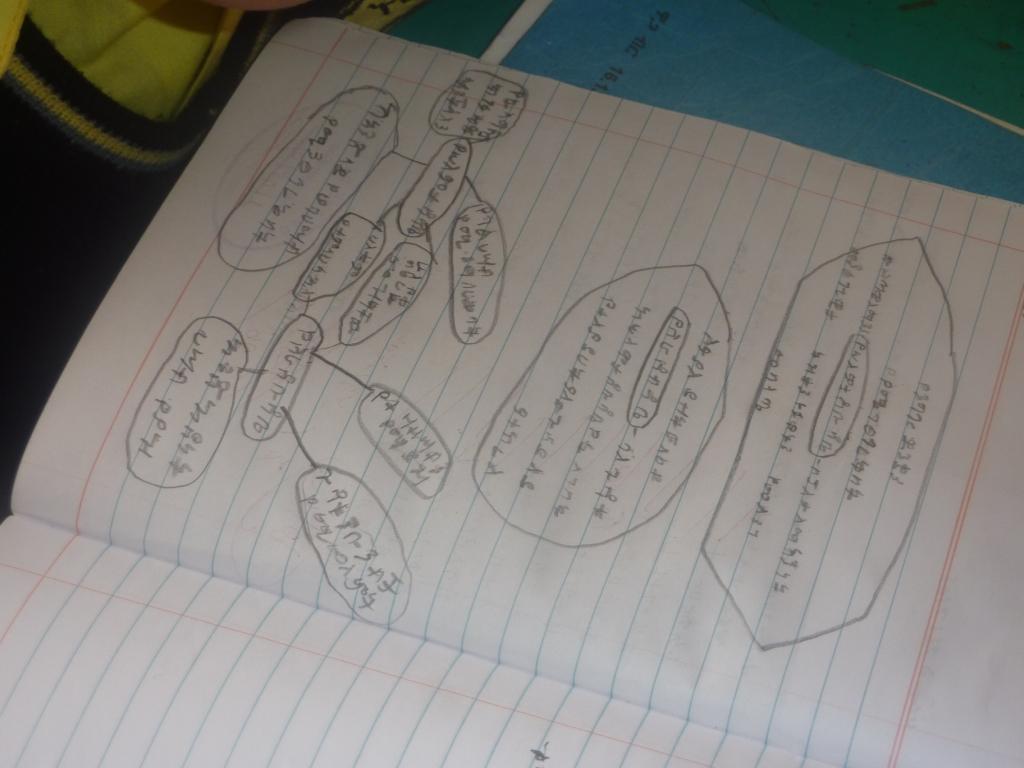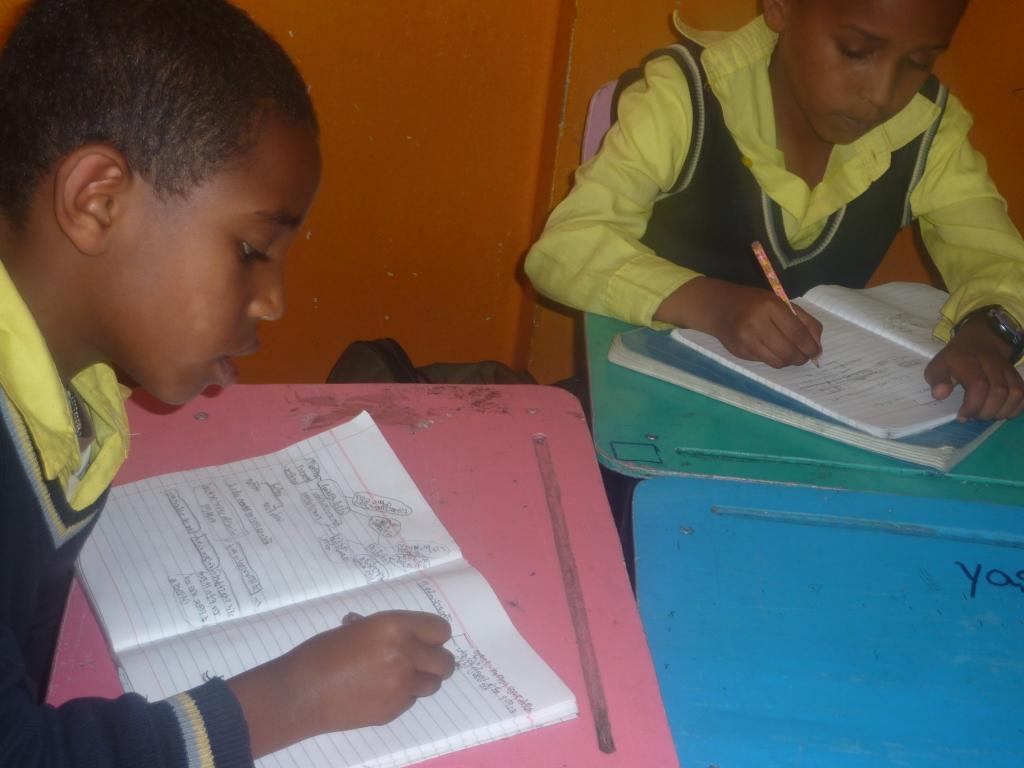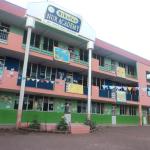The above example of a student exercise book in an Ethiopian school includes students using Thinking Maps (visual tools) to organize their thinking, understand their thinking and for transferring to writing.
In Ethiopia, Exercise Books are an important link of the student’s work at school and sharing of their work with the parents at home. Traditionally Exercise Books are used across Ethiopia including in rural areas. Usually what you find in Exercise Books are notes copied from the black board, classwork and homework from the text books. The use of Thinking Maps incorporating the student’s thinking is a transitional change in both use and content of the Exercise Books. The visual example of the third grader is from a classroom that has used Thinking Maps for less than two months.
 The student brainstorms formal writing and informal writing (two Circle Maps); compares and contrasts the two types of writing (Double Bubble Map); classifies the two types of letters (Tree Map); considers the physical structure of a letter (Brace Map) and; sequences the steps of writing a letter (Flow Map). They then begin their writing in the Exercise Book. The student’s interest in using Thinking Maps and the teacher’s encouragement to include visual mapping models using the Exercise Book in a ‘non-traditional’ manner capturing the interest, depth of understanding and development of their student-centered environment with the Thinking Schools Ethiopia approach.
The student brainstorms formal writing and informal writing (two Circle Maps); compares and contrasts the two types of writing (Double Bubble Map); classifies the two types of letters (Tree Map); considers the physical structure of a letter (Brace Map) and; sequences the steps of writing a letter (Flow Map). They then begin their writing in the Exercise Book. The student’s interest in using Thinking Maps and the teacher’s encouragement to include visual mapping models using the Exercise Book in a ‘non-traditional’ manner capturing the interest, depth of understanding and development of their student-centered environment with the Thinking Schools Ethiopia approach.
I really think that Thinking maps make a big difference in my life because before I really didn’t read my books much because it takes too much time to understand. Now I am interested to open my exercise books making Thinking Maps to actually study and know what I am reading. We can be independent and learn by ourselves, because Thinking Maps are our teachers. They make everything easy so that we can read and remember — it makes you visualize things. Thinking Maps capture our thinking in our mind.
Hannan Abdulfetah, Grade 9 Student, Bikolos Academy
download more reflections from students, teachers and principal at Bikolos Academy, Addis Ababa, Ethiopia
With the potential of student thinking and learning content significantly linked to the exercise books, there is a opportunity for elevating the outcomes of the exercise book’s potential through incorporating thinking methodologies within the exercise books. This includes;
- the use of visual mapping for thinking (as in the example above);
- reflective questioning; collaborative learning with families at home;
- collaborative networking with ideas from home to school, and school to home.
By incorporating thinking methodologies within exercise book, it now becomes a transformational tool for a student to practice, model and share with their home (family and friends) how they think. The exercise book supports the students growth as life long thinkers using methodologies for problem solving, learning, thinking and understanding — with their own minds and capacities.
For the educator, this transforms the traditional exercise book of only being a vessel of the teacher content as copied from the board, to a means of developing, practicing, sharing and demonstrating life-long thinking skills. This provides teachers with a tool to observe and assess how students are thinking independently — especially with Thinking Maps (visual mapping) and reflective questioning — through collaborative learning methods. Each day the students can be provided a short amount of time to share their work from the previous day / night they did independently in their exercise books.
Essentially traditional exercise books — a wonderful connector with school and home — transform into Idea Books for Thinking:
What is an Idea Book
 An idea book records personal experiences so that the individual can express and learn from them using thinking methodologies. For an idea book to be an effective learning tool, the students and teachers must desire to reflect, create and think about our own experiences. An effective idea book reflects the writer’s active involvement and participation in her/his own life. An idea book is used for observation, reflection, and research for grades K-12. The goals and purpose are consistent throughout the grade levels.
An idea book records personal experiences so that the individual can express and learn from them using thinking methodologies. For an idea book to be an effective learning tool, the students and teachers must desire to reflect, create and think about our own experiences. An effective idea book reflects the writer’s active involvement and participation in her/his own life. An idea book is used for observation, reflection, and research for grades K-12. The goals and purpose are consistent throughout the grade levels.
Mechanics
Exercise books such as the traditional such as the traditional ones in Ethiopia, make an excellent choice for an idea book. Student made books are also fine as they create a pride of ownership. They can be created with lined or unlined paper using either construction paper or board (e.g. a box) for the covers. In either case, the students should have an opportunity to create covers that express their own individuality (ownership). Types of entries in the idea book encompass a variety of methods including words, illustrations, drawings, and photos.

Modeling
It is very important for the teacher and other classroom adults to keep and use an idea book concurrently with the students. Their modeling includes regularly using and sharing their own idea book.
Sharing
Each student should regularly share his/her idea book with their peers. The students can share their entries:
- student to student (pair-share),
- small group share (3 or 4 students collaboratively)
- whole group share (presentation)
Pair-share and small group sharing (collaborative learning) are recommended, followed by several students sharing to the whole group. Effective sharing includes compliments, insights, questions, and observations (teacher to student, student to student, and student to teacher). Each student should regularly share their idea book with the teacher (once a week or once every two weeks — regularity is important). When meeting with the teacher, the student should share their one or two favorite entries. High level reflective questions are most effective in discussing the entries with the student. Occasionally, students should take examples from their exercise books and post them on the classroom wall. These examples on the walls will provide a variety of modeling to the class to extend their exploration of their own experiences.








